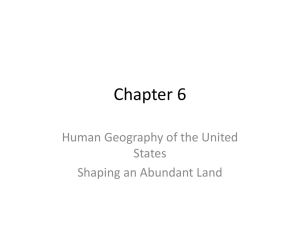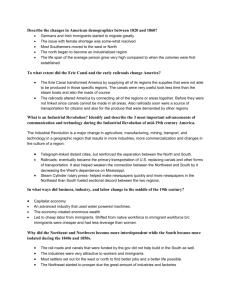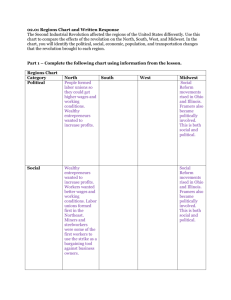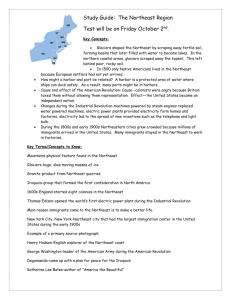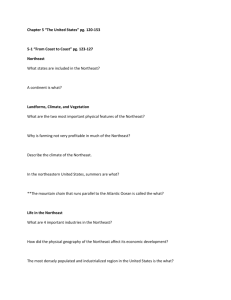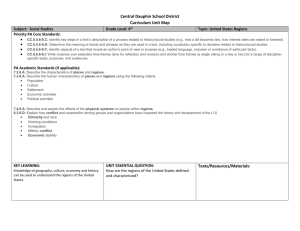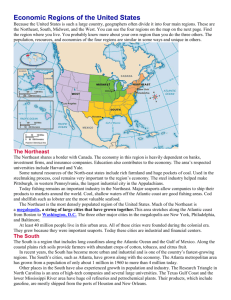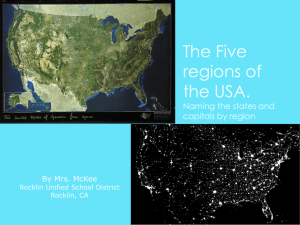02_01_ush_
advertisement
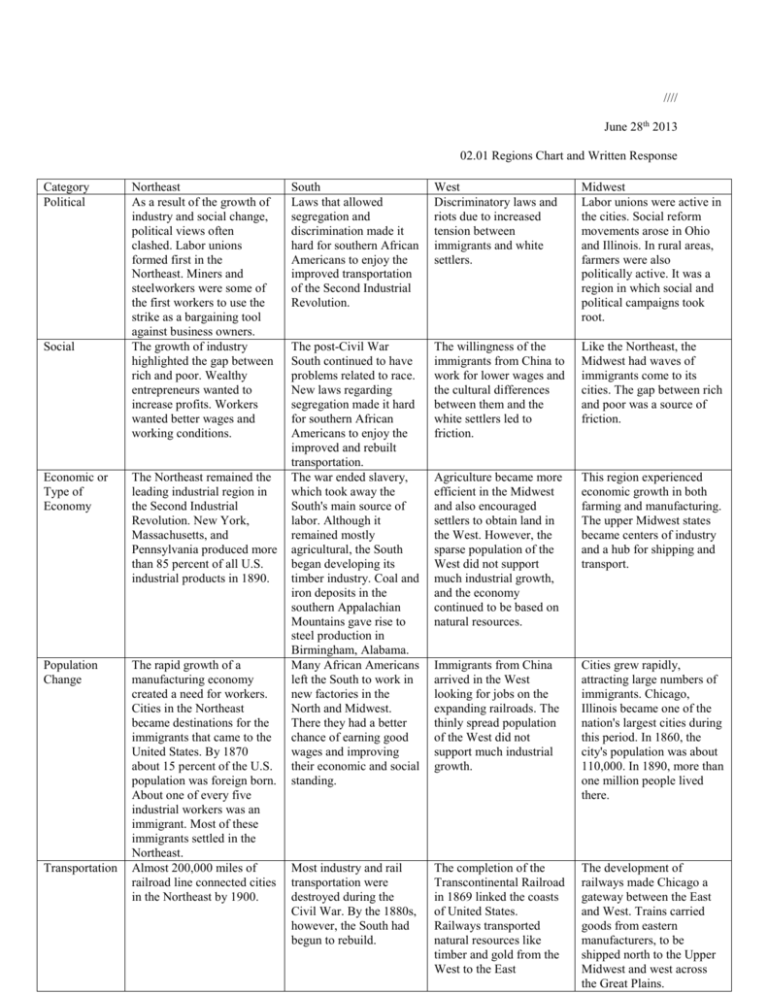
//// June 28th 2013 02.01 Regions Chart and Written Response Category Political Social Northeast As a result of the growth of industry and social change, political views often clashed. Labor unions formed first in the Northeast. Miners and steelworkers were some of the first workers to use the strike as a bargaining tool against business owners. The growth of industry highlighted the gap between rich and poor. Wealthy entrepreneurs wanted to increase profits. Workers wanted better wages and working conditions. Economic or Type of Economy The Northeast remained the leading industrial region in the Second Industrial Revolution. New York, Massachusetts, and Pennsylvania produced more than 85 percent of all U.S. industrial products in 1890. Population Change The rapid growth of a manufacturing economy created a need for workers. Cities in the Northeast became destinations for the immigrants that came to the United States. By 1870 about 15 percent of the U.S. population was foreign born. About one of every five industrial workers was an immigrant. Most of these immigrants settled in the Northeast. Almost 200,000 miles of railroad line connected cities in the Northeast by 1900. Transportation South Laws that allowed segregation and discrimination made it hard for southern African Americans to enjoy the improved transportation of the Second Industrial Revolution. West Discriminatory laws and riots due to increased tension between immigrants and white settlers. Midwest Labor unions were active in the cities. Social reform movements arose in Ohio and Illinois. In rural areas, farmers were also politically active. It was a region in which social and political campaigns took root. The post-Civil War South continued to have problems related to race. New laws regarding segregation made it hard for southern African Americans to enjoy the improved and rebuilt transportation. The war ended slavery, which took away the South's main source of labor. Although it remained mostly agricultural, the South began developing its timber industry. Coal and iron deposits in the southern Appalachian Mountains gave rise to steel production in Birmingham, Alabama. Many African Americans left the South to work in new factories in the North and Midwest. There they had a better chance of earning good wages and improving their economic and social standing. The willingness of the immigrants from China to work for lower wages and the cultural differences between them and the white settlers led to friction. Like the Northeast, the Midwest had waves of immigrants come to its cities. The gap between rich and poor was a source of friction. Agriculture became more efficient in the Midwest and also encouraged settlers to obtain land in the West. However, the sparse population of the West did not support much industrial growth, and the economy continued to be based on natural resources. This region experienced economic growth in both farming and manufacturing. The upper Midwest states became centers of industry and a hub for shipping and transport. Immigrants from China arrived in the West looking for jobs on the expanding railroads. The thinly spread population of the West did not support much industrial growth. Cities grew rapidly, attracting large numbers of immigrants. Chicago, Illinois became one of the nation's largest cities during this period. In 1860, the city's population was about 110,000. In 1890, more than one million people lived there. Most industry and rail transportation were destroyed during the Civil War. By the 1880s, however, the South had begun to rebuild. The completion of the Transcontinental Railroad in 1869 linked the coasts of United States. Railways transported natural resources like timber and gold from the West to the East The development of railways made Chicago a gateway between the East and West. Trains carried goods from eastern manufacturers, to be shipped north to the Upper Midwest and west across the Great Plains. Part 2 – Explain how the Second Industrial Revolution affected the North, South, West, and Midwest. Which region would you have preferred to live in during this period? Why? The Second Industrial Revolution affected the North, South, West, and Midwest with changes such as population, transportation, and economy changes. The rapid growth of the manufacturing economy in each region created a need for workers attracting many immigrants. By 1870 about 15 percent of the U.S. population was foreign born and, about one of every five industrial workers was an immigrant. In addition, each region also developed and improved their transportation system, usually, by railroads. These railroads connected cities and were used to transport natural resources and goods from manufacturers to other places. Moreover, each region had their own type of economy. The northeast remained the leading industrial region and the south and west maintained a developing agricultural economy but, the west’s sparse population did not support much industrial growth. Also, the Midwest experienced economic growth in both farming and manufacturing. Furthermore, if I had to live in a certain region during the Second Industrial Revolution period I would prefer to live in the northwest region which was the leading industrial region in both the First Industrial Revolution and Second Industrial Revolution. The rapid growth of the economy begged for more workers so it would have been easy for me to find a job and provide for my family. The northeast region benefited, improved, flourished more than any other region in both Industrial Revolutions and I would have wanted to be a part of that experience.
